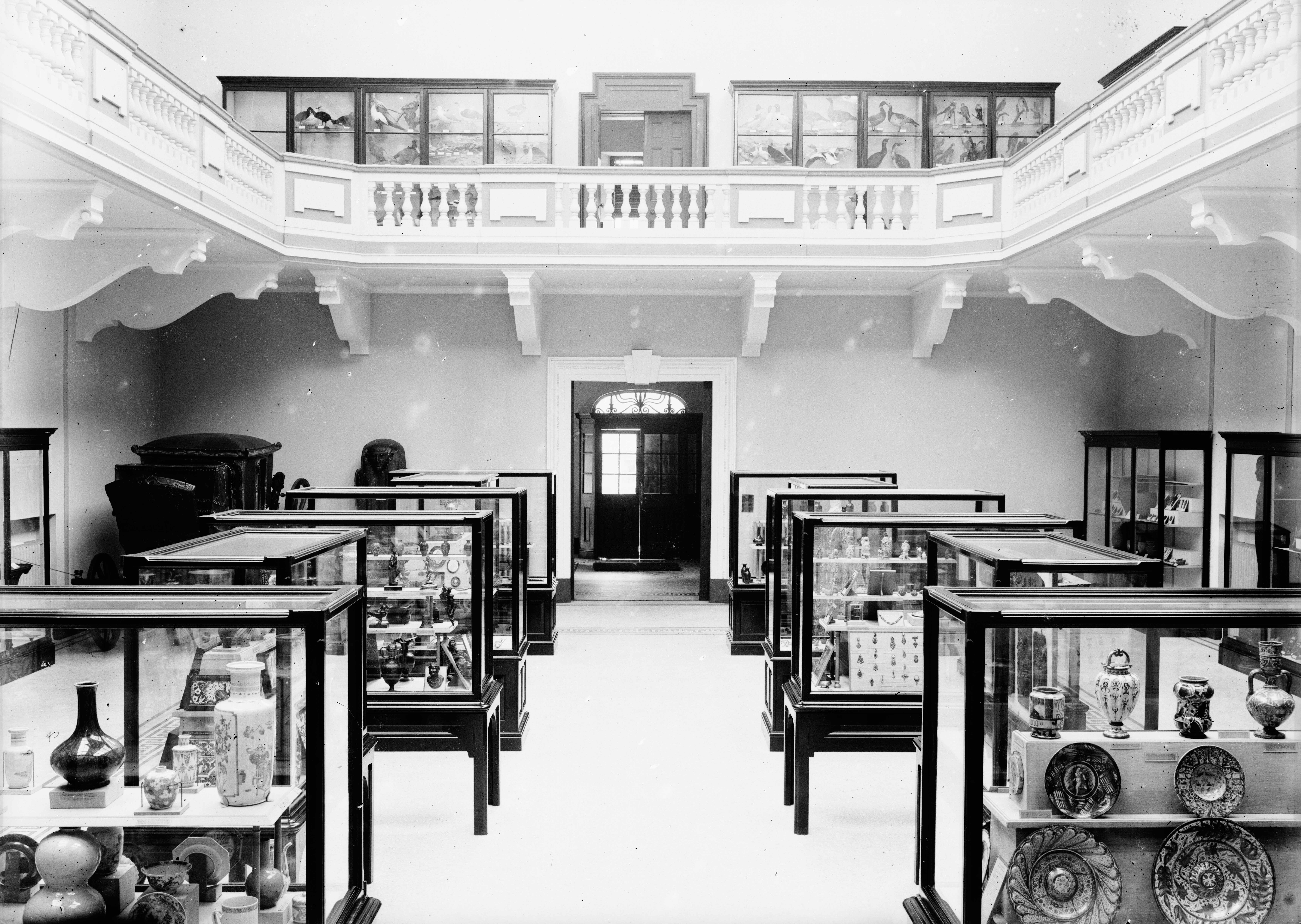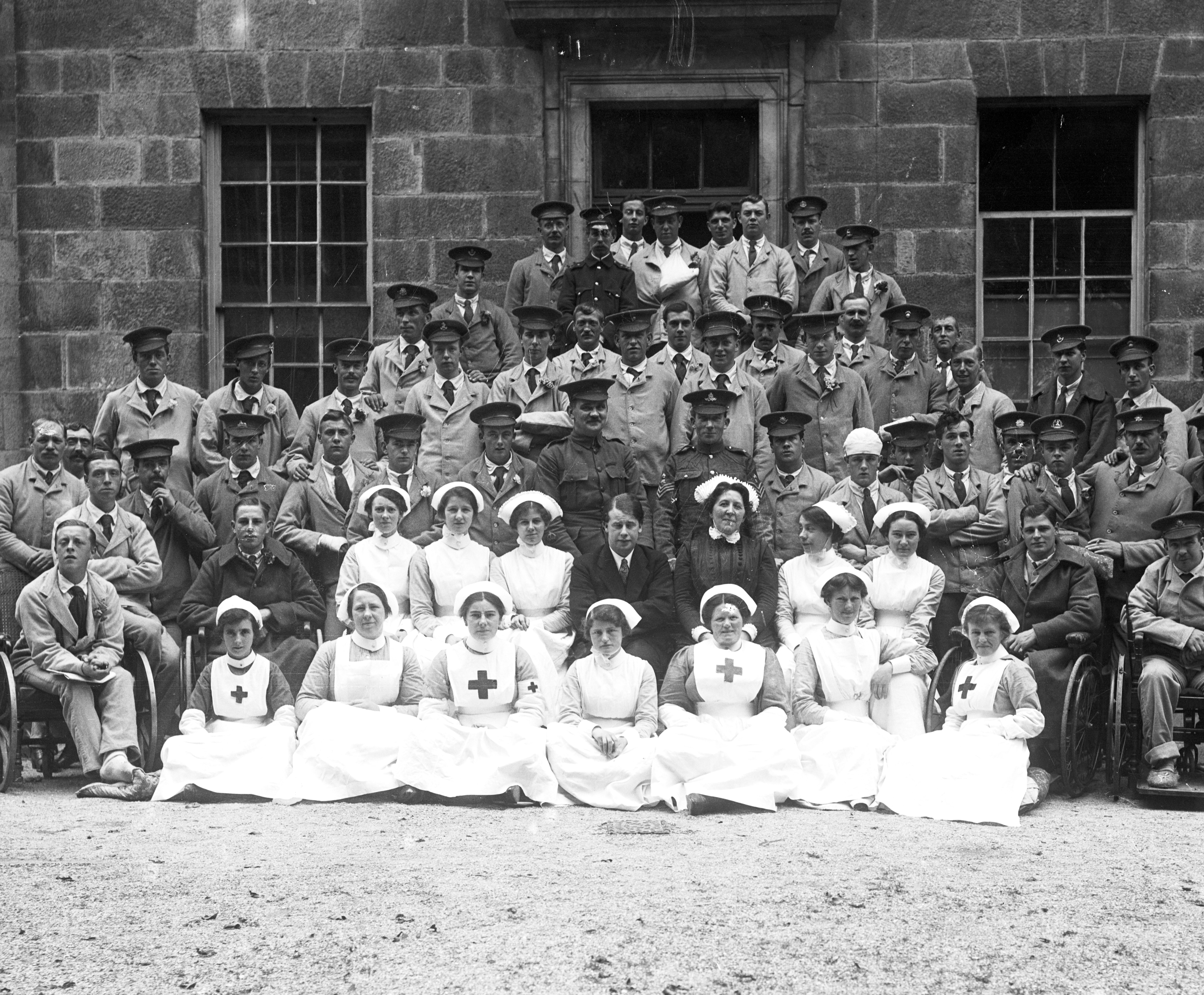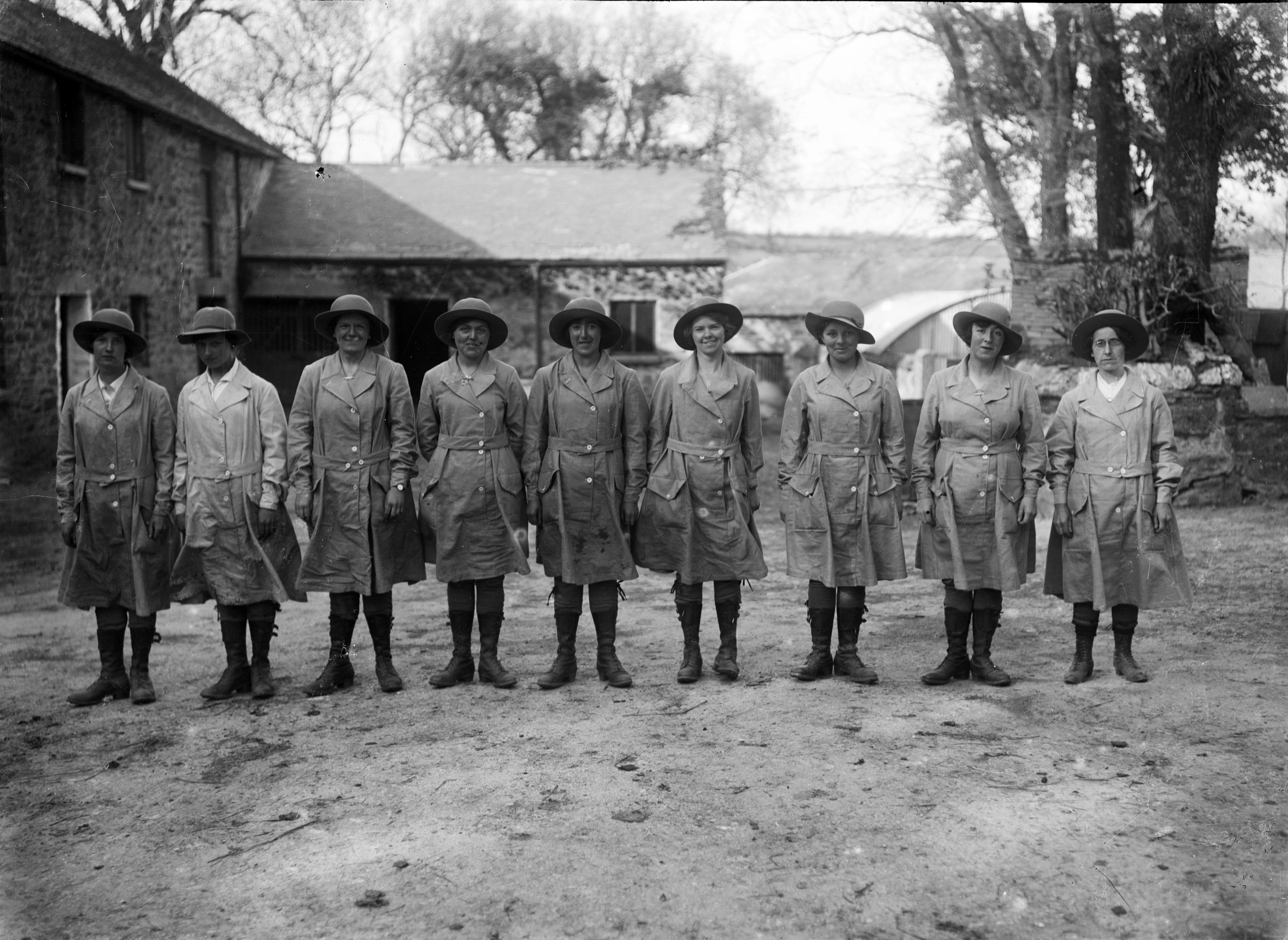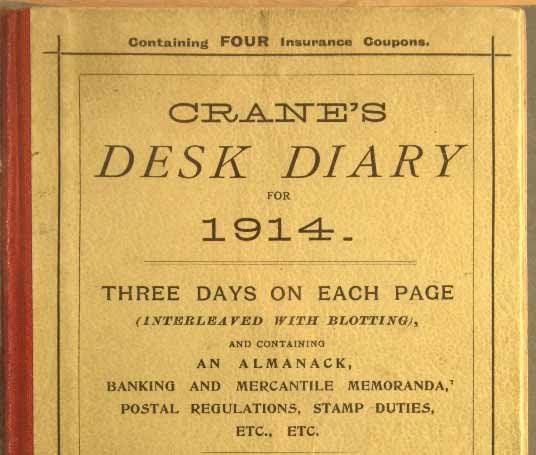Tregavethan Farm and the Women’s Land Army
The RIC’s photographic collection from the First World War features over 200 images of the Women’s Land Army at Tregavethan Farm, near Truro. Reproduced from a series of glass plate pictures, taken by local photographer A W Jordan, they form an extraordinary record of the Land Girls’ time in Cornwall – including their training and friendships.
By January 1915, over 100,000 British men who had been employed in agriculture had gone to war. Consequently, it was difficult for farmers to complete their seasonal work and produce sufficient quantities of food. One outcome of this was the formation of the Women’s Land Army in March 1917 – a civilian women’s labour force of mobile workers, established to recruit, train and then channel healthy young women into farm work.
At that time, Tregavethan Farm, now known as Causilgey Manor, was owned by Mr and Mrs Alfred Martin. Their home became one of 247 Women’s Land Army training centres, which (along with 140 ‘practice farms’) were set up on selected farms around England and Wales.

Nine members of the Women’s Land Army pictured with the owners of Tregavethan Farm and their dog. Photographer: A W Jordan. © From the collection of the RIC (TRURI-1972-2-54).
Trainees were sent to Tregavethan following an interview with a local Selection Committee, who questioned them on their health, physical abilities and reasons for wishing to do land work. If they were prepared to sign up for 12 months, the recruits could choose whether to toil in agriculture, timber cutting or forage. Each of these skills were taught at Tregavethan, under the instruction of the Martin family.
Schooling in agriculture consisted of: the correct use of farm implements, milking, the care of young livestock, and working with horses. For a few, including those at Tregavethan, it also comprised learning to drive the newly-introduced motor tractors.

Two members of the Women’s Land Army being shown an early tractor by a man in army uniform. Photographer: A W Jordan. © From the collection of the RIC (TRURI-1972-2-266).
For timber cutting, the Martin household would have provided guidance on measuring trees, cutting down and stacking trees, loading and transporting timber, operating saw mills, and tree nursery cultivation and planting.

Two members of the Women’s Land Army, kneeling in a wooded area, preparing to fell a tree with a crosscut saw. Photographer: A W Jordan. © From the collection of the RIC (TRURI-1972-2-6).
Forage work tended to be trained on the job. However, Jordan’s photographs suggest that at least some elements were taught at Tregavethan. For example, the girls are seen producing bales of hay for horse feed and straw for bedding, and cutting chaff into short lengths.
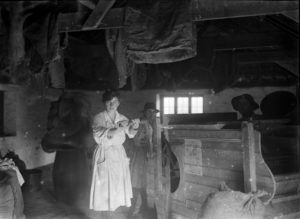
Members of the Women’s Land Army pictured in a shed working a hand-operated chaff-cutter at Tregavethan Farm. Photographer: A W Jordan. © From the collection of the RIC (TRURI-1972-2-241).
Jordan’s images also depict the trainees in boots, gaiters, felt hats and pale fabric overalls. This demonstrates the revolutionary nature of Women’s Land Army uniform, whereby recruits were permitted to wear breeches, to give them the same freedom of movement as men for physical work, and some chose to have their hair ‘bobbed’.
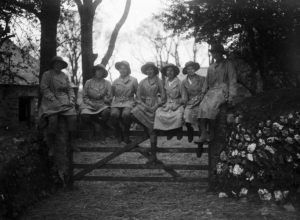
Seven members of the Women’s Land Army sitting on a gate at Tregavethan Farm, facing towards the camera. The women’s uniform consists of boots, gaiters, felt hats and pale fabric overalls. Photographer: A W Jordan. © From the collection of the RIC (TRURI-1972-2-82).
The Land Girls would have been paid 19 shillings a week for their months training. This would have been increased to 20 shillings once they passed an efficiency test. Some of the most memorable of Jordan’s pictures illustrate the group at the presentation of their certificates, which were given by Lady Ingeborg Molesworth-St Aubyn. Celebrations appear to have included games such as leapfrog.

A group of the Women’s Land Army at the presentation of their efficiency tests. The awards were presented by Lady Ingeborg-St Aubyn. Photographer: A W Jordan. © From the collection of the RIC (TRURI-1972-2-340).

A group of the Women’s Lad Army members playing leapfrog after their efficiency test, pictured at Tregavethan Farm. Photographer: A W Jordan. © From the collection of the RIC TRURI-1972-2-339
Between March 1917 and May 1919, 23,000 girls became official full-time members of the Women’s land Army. This was a small but hugely significant part of the 300,000 women who were working on the land by 1918, a part in which the Martin family and Tregavethan Farm played a vital role.
You can view a selection of RIC archive images of the Women’s Land Army at Tregavethan Farm below. A wider collection can be found on Media Storehouse.
© From the collection of the RIC (TRURI-1972-2-68, 70, 88, 193, 203, 221, 228, 282, 313, 319, 327, 446).














